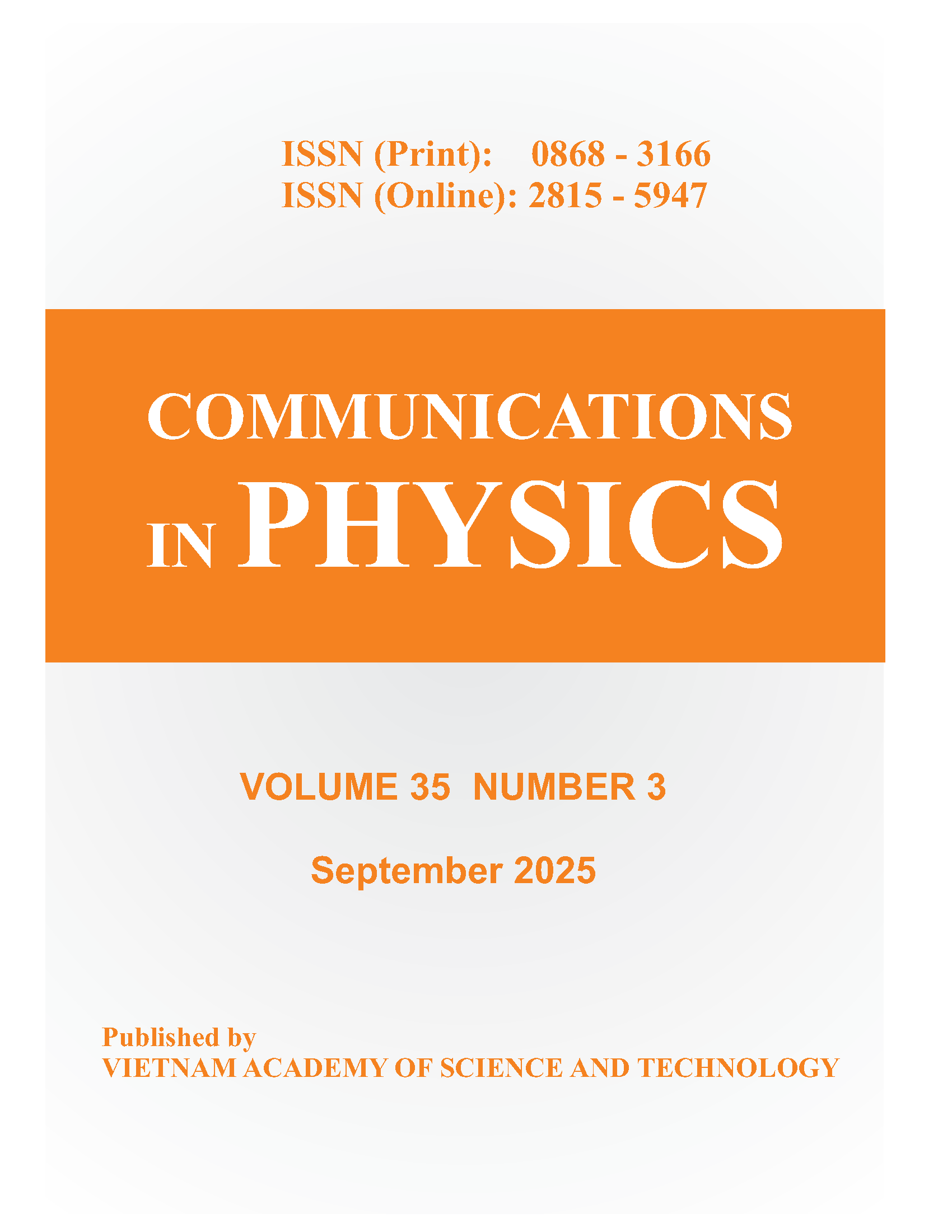Structural and optical properties of SrTiO3 nano material obtained by sol-gel method
Author affiliations
DOI:
https://doi.org/10.15625/0868-3166/27/2/9453Keywords:
ABO3, SrTiO3, sol-gel process, structure analysisAbstract
SrTiO3 nano particles were prepared by sol-gel process in order to optimize the temperature condition to obtain good quality material for different applications. The thermal treating condition was selected out through XRD, FTIR and Raman analysis of the synthesized power. The structural and optical property of the powder were studied carefully with XRD, SEM, FTIR, Raman and UV-Vis measurement. At optimized annealing temperature (from 900 oC to 1000 oC), the synthesized STO nano particles have good structure. The shape, size and optical band gap of obtained material are suitable for further applications.
Downloads
References
Kwon S.K., Park J.H., Min B.I., (2000), “Charge and orbital ordering and spin-state transition driven by structural distortion in YBaCo2O5”, Phys. Rev. B 62, pp. R14637-R14640.
Cho S.G., Johnson P.F., (1994), “Evolution of the microstructure of undoped and Nb-doped SrTiO3”, J. Mater. Sci., Vol. 29, No. 18, pp. 4866-4874.
Liu J.W., Chen G., Li Z.H., and Zhang Z.G., (2006), “Electronic structure and visible light photocatalysis water splitting property of chromium-doped SrTiO3”, Journal of Solid State Chemistry, 179, pp. 3704-3708.
Daniels J., and Hardtl K.H., (1976), “Electrical conductivity at high temperatures of donor-doped BaTiO3 ceramic” Phillips Res. Repts., 31, pp. 489-504.
Fleig J., Rodewald S., and Maier J., (2000), “Microcontact Impedance Measurements of Individual Highly Resistive Grain Boundaries: General Aspects and Application to Acceptor-Doped SrTiO3,” J. Appl. Phys., 87, pp. 2372-81.
Perry C.H., Fertel J.H., McNelly T.F., (1967), “Temperature Dependence of the Raman Spectrum of SrTiO3 and KTaO3”, J. Chem. Phys. 47 (5), pp. 1619-1625.
Malo S., Maignan A., (2004), “Structural, magnetic, and transport properties of the SrTi1-xCoxO3-δ Perovskite (0 ≤ x ≤ 0.9)”, Inorg. Chem., Vol. 43, No.25, pp. 8169-8175.
Rodewald S., Fleig J., and Maier J., (2001), “Microcontact Impedance Spectroscopy at Single Grain Boundaries in Fe-Doped SrTiO3 Polycrystals”, J. Am. Ceram. Soc., 84, pp. 521-530.
Silva L.F.D., Bernardi M.I.B., Maia L.J.Q., Frigo G.J.M., Mastelaro V.R., (2009), “Synthesis and thermal decomposition of SrTi1−xFexO3 (0.0 ≤ x ≤ 0.1) powders obtained by the polymeric precursor method”, J. Therm Anal Calorim, Vol. 97, No.1 pp. 173-177.
Muralidharan M., et al., (2015), "Carrier mediated ferromagnetism in Cr doped SrTiO3 compounds", J Mater Sci: Mater Electron.
Hongwei Bai., et al., (2013), "Facile Fabrication of TiO2/SrTiO3 Composite Nanofibers by Electrospinning for High Efficient H2 Generation", J. Am. Ceram. Soc., 96 [3], pp 942-949.
Tieping Cao., et al., (2011), "A Facile in Situ Hydrothermal Method to SrTiO3/TiO2 Nanofiber Heterostructures with High Photocatalytic Activity", American Chemical Society., 27, 2946-2952.
Han J., et al., (2007), "Dielectric response of soft mode in ferroelectric SrTiO3", Appl. Phys. Lett. , 90, pp. 031104-06.
Petzelt J., et. al., (2001), "Dielectric, infrared, and Raman response of undoped SrTiO3 ceramics: Evidence of polar grain boundaries", Phys. Rev., B 64, pp. 184111-20.
F.P. Koffyberg, K. Dwight, A. Wold, (1979) “Interband transitions of semiconducting oxides determined from photoelectrolysis spectra,” Solid State Commun., 30, 433.
Y. I. Kim, S. J. Atherton, E. S. Brigham, T. E. Mallouk, (1993) “Sensitized Layered Metal Oxide Semiconductor Particles for Photochemical Hydrogen Evolution from Nonsacrificial Electron Donors,” Phys. Chem., 97, 11802.
D. L. Wood and J. Tauc, (1972) “Weak Absorption Tails in Amorphous Semiconductors,” Phy. Rev. B, Vol. 5, No. 8, pp. 3144-3151.
Downloads
Published
How to Cite
Issue
Section
License
Communications in Physics is licensed under a Creative Commons Attribution-ShareAlike 4.0 International License.
Copyright on any research article published in Communications in Physics is retained by the respective author(s), without restrictions. Authors grant VAST Journals System (VJS) a license to publish the article and identify itself as the original publisher. Upon author(s) by giving permission to Communications in Physics either via Communications in Physics portal or other channel to publish their research work in Communications in Physics agrees to all the terms and conditions of https://creativecommons.org/licenses/by-sa/4.0/ License and terms & condition set by VJS.











